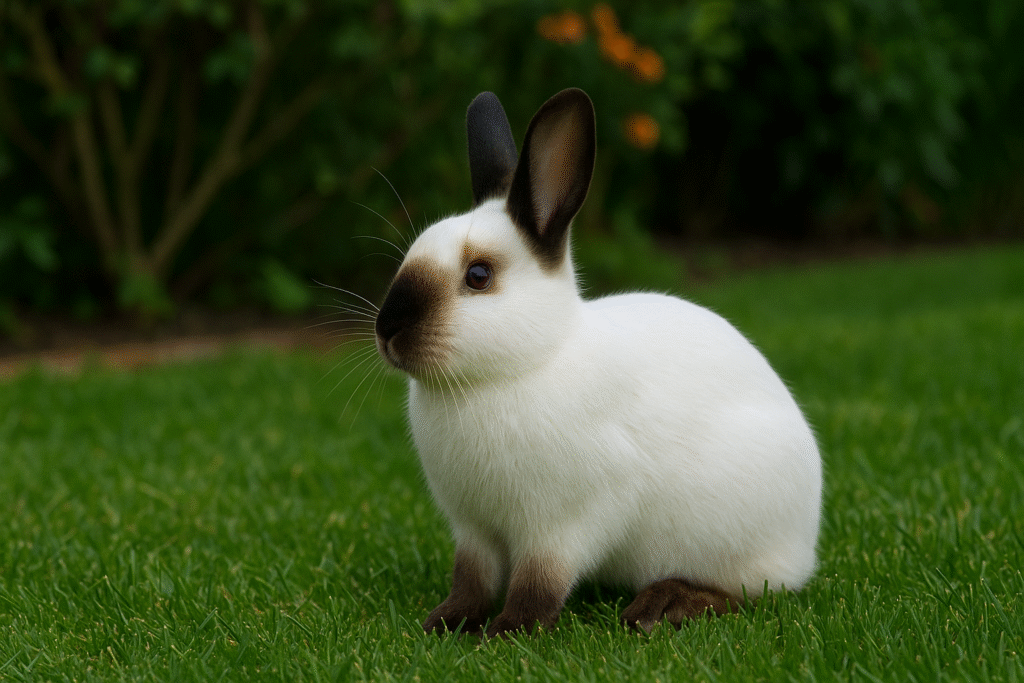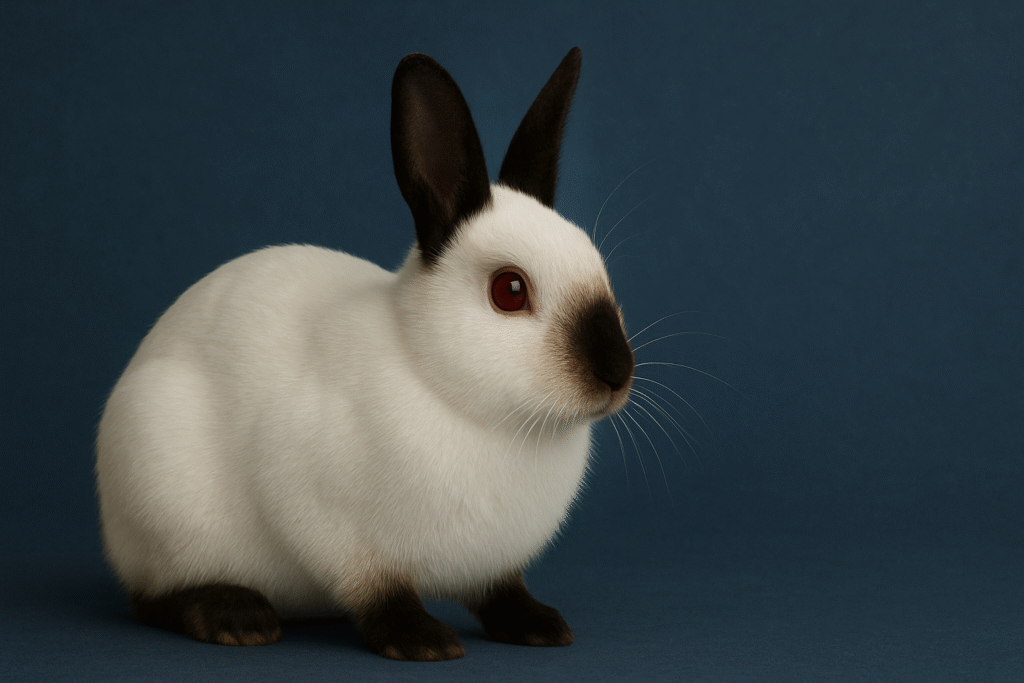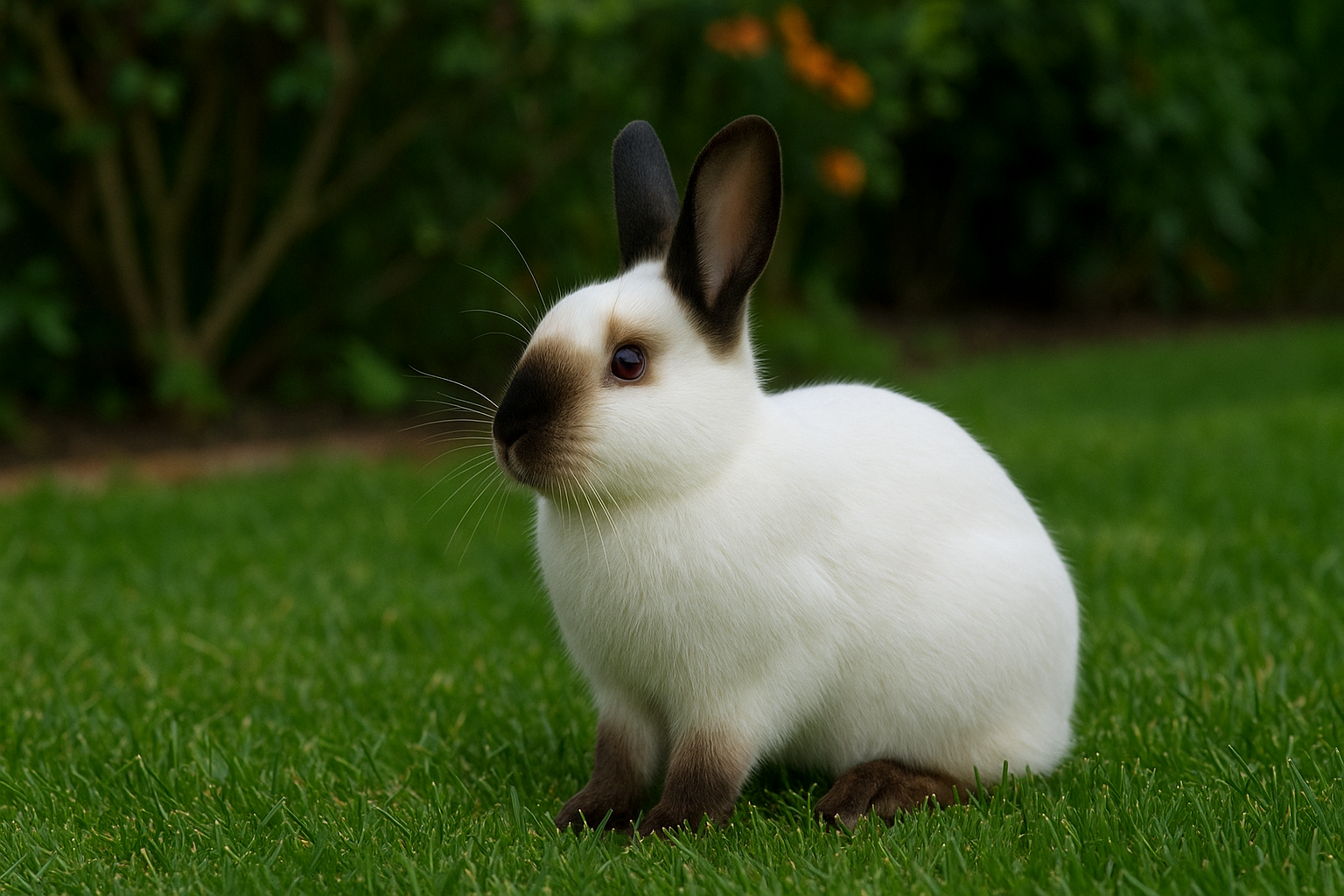The Himalayan Rabbit: A Complete Guide to This Unique and Charming Breed

The Himalayan Rabbit is a fascinating and distinctive breed, known for its striking appearance and calm temperament. With its soft, white coat and dark markings on the ears, nose, paws, and tail, the Himalayan Rabbit is often admired for its beauty. If you’re considering adopting a Himalayan Rabbit or want to learn more about this breed, this guide will cover everything you need to know, from its history and physical characteristics to its care, grooming, and health.
The Origin of the Himalayan Rabbit
The Himalayan Rabbit was originally bred in Europe in the early 20th century. This breed was developed by crossing a white rabbit with a breed that had darker markings. Over time, the Himalayan Rabbit was further refined for its striking coat color pattern, where the body is predominantly white, and the darker fur appears on the ears, nose, paws, and tail.
Physical Characteristics of the Himalayan Rabbit
The Himalayan Rabbit is a medium-sized breed, typically weighing between 4 to 5 pounds when fully grown. “Their small, rounded body and sleek fur create an irresistibly adorable, cuddly look. One of the most distinctive traits of the Himalayan Rabbit is its unique color pattern.”
The white body is contrasted by dark markings on the ears, nose, paws, and tail, which are the result of temperature-sensitive pigmentation.
These rabbits have a soft, dense coat that is short to medium in length, making them relatively easy to groom. Their eyes are often a deep ruby red or dark brown, giving them an expressive and striking appearance. The Himalayan Rabbit’s ears are large and upright, adding to their distinctive look.
Personality of the Himalayan Rabbit

The Himalayan Rabbit is known for its calm, docile, and friendly nature. These rabbits are typically social and enjoy spending time with their human companions. They are gentle and easy to handle, making them great pets for children or first-time rabbit owners. Their relaxed temperament makes them ideal for those who are looking for a pet that enjoys cuddling and bonding with its owner.
“While Himalayan Rabbits are typically gentle, they are also quite energetic and love exploring their environment.”
They are curious by nature and can be seen hopping around in a safe, enclosed area. These rabbits are intelligent and can be litter-trained with patience and consistency. It’s important to spend time interacting with your Himalayan Rabbit to keep it mentally stimulated and happy. Her are the 10 cat fun & activites for usa
Diet and Nutrition for the Himalayan Rabbit
Like all rabbits, the Himalayan Rabbit requires a healthy, balanced diet to stay in good health. The bulk of their diet should consist of fresh hay, which provides essential fiber for digestion and helps keep their teeth healthy. In addition to hay, fresh leafy greens such as spinach, parsley, and kale should be included in their diet. You can also offer them fresh vegetables like carrots, broccoli, and bell peppers.
Grooming the Himalayan Rabbit
While the Himalayan Rabbit has a short to medium-length coat, regular grooming is still necessary to keep their fur in good condition. Brushing your rabbit once or twice a week will help prevent mats and tangles. This also helps to remove loose fur and keep their coat looking sleek.
Because the Himalayan Rabbit is prone to shedding, it’s essential to keep up with their grooming routine, especially during shedding seasons. They may also require occasional baths if they get dirty, but it’s important to use a rabbit-safe shampoo and avoid getting water into their ears.
Additionally, check their ears, teeth, and nails regularly. Trim their nails as needed and ensure their ears are clean and free from dirt or wax buildup.
Health Considerations for the Himalayan Rabbit
Like all rabbits, the Himalayan Rabbit can face certain health issues. One of the most common concerns for this breed is dental problems, as rabbits’ teeth grow continuously. Providing your rabbit with enough fiber in its diet through hay will help wear down their teeth and prevent overgrowth.
“Himalayan Rabbits may also be susceptible to weight gain, particularly if they lack sufficient physical activity.”
. Regular playtime and physical activity are essential to keep them healthy and prevent weight gain.
Another health consideration for Himalayan Rabbits is their susceptibility to temperature changes. Because their coat pattern is temperature-dependent, they may have more sensitivity to heat. It’s important to keep them in a cool, well-ventilated area to avoid heatstroke, especially during warmer months.
Exercise and Mental Stimulation
The Himalayan Rabbit is an active and curious breed, so regular exercise is important for their health. “Set up a secure, confined space for your rabbit to safely hop and explore.”
Setting up a rabbit-proofed room or a large playpen will allow them to get plenty of exercise and mental stimulation.
Himalayan Rabbits enjoy interacting with their owners, so spending time with them through play and bonding activities is essential. You can offer them toys such as tunnels, chew blocks, and cardboard boxes to keep them entertained.
Conclusion
The Himalayan Rabbit is a beautiful, calm, and friendly breed that makes an excellent pet for families and individuals alike. With their unique appearance, sweet temperament, and manageable size, Himalayan Rabbits are an ideal choice for first-time rabbit owners or anyone looking for a laid-back, loving companion. By providing them with a proper diet, regular grooming, and plenty of exercise, you can ensure that your Himalayan Rabbit stays healthy, happy, and content.
Whether you’re drawn to their striking coat pattern or their gentle personality, the Himalayan Rabbit will quickly become a cherished member of your family.



